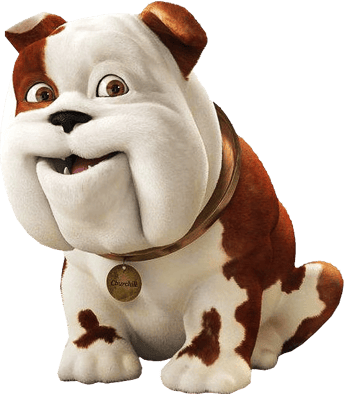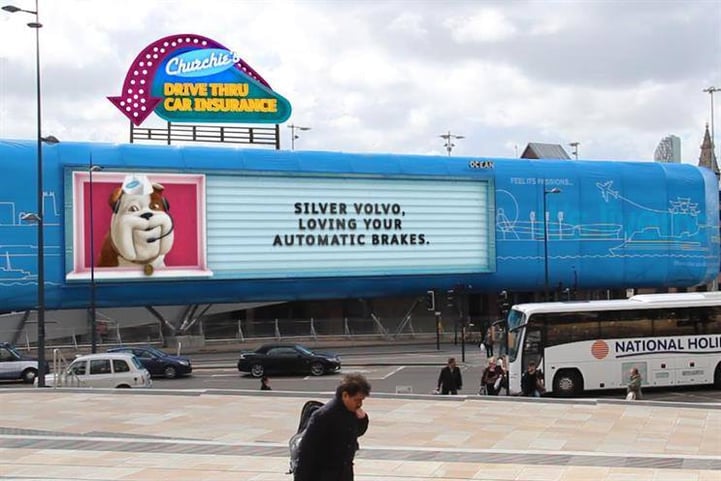“I’ve just read a piece of research on our brand and people are saying they have seen our brand where we don’t advertise or where we have not advertised for years. They are seeing our brand where we don’t have a presence. Why is this? Is the research suspect?”
This is a real quote, and it demonstrates the potent power in creating a brand icon.
A brand icon can be described as a symbol, character, animal or something else, that accurately represents your organisation’s culture, purpose, attitude or point-of-difference.
You deploy it across all of your internal and external communications and it becomes, over time, a symbol for what your brand represents – eventually becoming a series of ideas that your audiences consider valuable and that you own in their mind. When they see your brand icon, it triggers a series of rational and emotional prompts that form your brand picture by association.
A series of ideas that your audiences consider valuable and that you own in their mind.
A brand icon’s visual image is a primary way to create Distinctive Brand Assets, or 'DBAs'. A brand icon will carry more meaning and associated values than imagery alone. Imagery can have a unique style, but the variety of a portfolio of images and their ability to capture attention – through their association with the distinctive attributes that are foundational to the brand's fame – often lack the ability that a brand icon has to deliver enduring brand recall and association.
It is to be noted that a brand icon is not usually a logo – although it could be a logo brought to life. So, if you take McDonald’s as an example, the famous logo stirs strong brand associations and emotions. But, you don’t see McDonald’s using the Golden Arches as the main brand creative asset across all external and internal communications.
The real value for brands adopting a brand icon is in unprompted recall.
My personal experience has seen iconic brands punch 10 times above their weight in like-for-like spend. So, if you have an established brand icon, you’ll be spending £100,000, whereas your competitor who does not have an established brand icon will be spending £1,000,000 for the same attention and recall.

© Churchill Insurance
Examples of brand icons are Churchill Insurance’s dog, Investec Bank’s Zebra, Compare The Market’s Meerkats, Kellogg’s Frosties’ Tony the Tiger, and the insurer GoCompare’s opera singer ‘Gio Compario’, played by the Welsh tenor Wynne Evans.
It is also to be noted that brand icons work especially well for ‘Service Brands’, like insurance and financial services, where there is no actual product you can hold in your hands – just a service you experience.
The UK bank, Lloyds, has been emotionally connecting customers with its services through the use of its iconic black horse for decades. It’s almost reached a point that, as a customer of the bank, you feel that if you look over your shoulder the black horse will be standing alongside you: dependable, energetic, and ready to support you on life’s financial journey.

© Investec
In stark contrast, as a customer of Investec Bank, its Zebra stands for the ‘Out of the Ordinary’ mindset Investec people bring to the table. It demonstrates the company’s focus on the individual and its energetic and passionate drive to make a real positive difference for its clients and the wider communities it serves. In essence, ‘A very different animal’.
Brand icons are an investment and not a fast fix to short-term branding challenges.
Both banks authentically play back their cultural heritage and both banks have supported, encouraged, nurtured, and placed high respect and value on their brand icons.

© Compare The Market
Brand icons are an investment and once in play, they need to be nurtured. So, you have to stick to your guns: You can’t think of them as a fast fix to short-term branding challenges.
Your brand icon will support you through the dark times.
It also means you need to have a constant presence in-market to establish your icon. Once established, you can back off marketing spend if market forces dictate, and your brand icon will support you through the dark times. It will also help you rocket out of any market slumps at a much faster pace than competitors that don’t have a brand icon when the good times return.
As an aside, it’s probably worth pointing out – and not wanting to ‘Teach grandma to suck eggs’ (Try translating that) – that there is a big difference between a brand icon and an iconic brand, such as Apple, Jack Daniel’s and Harley-Davidson I like to think of these brands as the ‘Tattoo Brands’. Brands that create such a deep connection and cultural alignment with their audiences that those people who follow and support those brands would tattoo the brand on their arm and then be pretty happy to defend and argue the values of the brand that their tattoo represents. Surely, branding Nirvana in the competition for ‘Culture Share’. Of course, it could be that an ‘iconic brand’ uses a ‘brand icon’ to deliver the brand promise, emotional and cultural alignment.
Brand icons instantly trigger brand recognition and cultivate trust.

© GoCompare
Overall, brand icons instantly trigger brand recognition, cultivate trust and familiarity, enhance positive brand recall and can be culturally significant. In terms of recall, visual stimuli are closely linked to memory and can evoke memories of taste, smell, happiness or value exchange. A brand icon, due to the very nature of how it is deployed, can build trust and familiarity amongst audiences. This is especially valuable in the financial services, legal or medical-health sectors.
The best brand icons can effortlessly cross borders and transcend cultural and linguistic challenges. This was true in our work for Investec as the Investec Zebra could be used as the brand icon whilst the copywriting in any ‘mother-tongue’ used around the icon would communicate the emotion, attitude, value, purpose, and, at all times, be culturally relevant, sensitive and authentic in any geography.
It’s important to note the power a brand icon can have with internal audiences
It’s also important to note the power a brand icon can have with internal audiences as they are the people responsible for growth, brand management and business success. I worked with a Global CMO who always said his primary audience was his own people. If they were on board, then he felt most other things would take care of themselves. Understanding how an icon will be received internally, and how it might be used, is critical. You want your people to be proud of their brand and to support it, embrace it and value it.
I have seen potential brand icons get no further than the presentation room either because of the fear of internal perception, concerns around how the icon will be received by industry peers, or the notion a brand icon will give media commentators something to grab hold of if business is not going so well . I can offer some hope here as, once established, a brand icon can ride these perceptions and storms and come out of the other side stronger than before.
Brand Icons can be creatively liberating.

© Churchill Insurance
Creatively, which is my world, brand icons are not the creative straitjacket some think they are. If anything, they are creatively liberating, with your task being to give the wheel more momentum as opposed to always seeking to reinvent it.
So, could a brand icon be right for your brand? What could it be? Why would you want one? Could you support it? What would it cost? How long would it take to establish? Would it resonate with your people? Could it reflect your purpose? Would it make your company famous? Would it help you to gain a disproportionate share of attention? Would it build belief across your audiences? All great questions that a Gravity Brand Workshop – personalised for your business – can start answering!
It’s a fun and valuable exercise and, you never know, it might help you strike gold.
Always remember, that a brand icon is just one way to answer broader brand questions. As a rule of thumb, your icon will be scalable, create an emotional connection, have global appeal without hindrance, be timeless and distinctive, adaptable and versatile to all the applications you will need, reflect your organisation’s heritage, values, purpose, and promise, resonate with your audiences and be memorable. Lastly, it should have personality.
To finish with the words of the legendary Creative Director and make-up artist Francois Nars:
“True icons are larger than life, unforgettable with an elegance that's mesmerisingly timeless.”
Share
Subscribe




